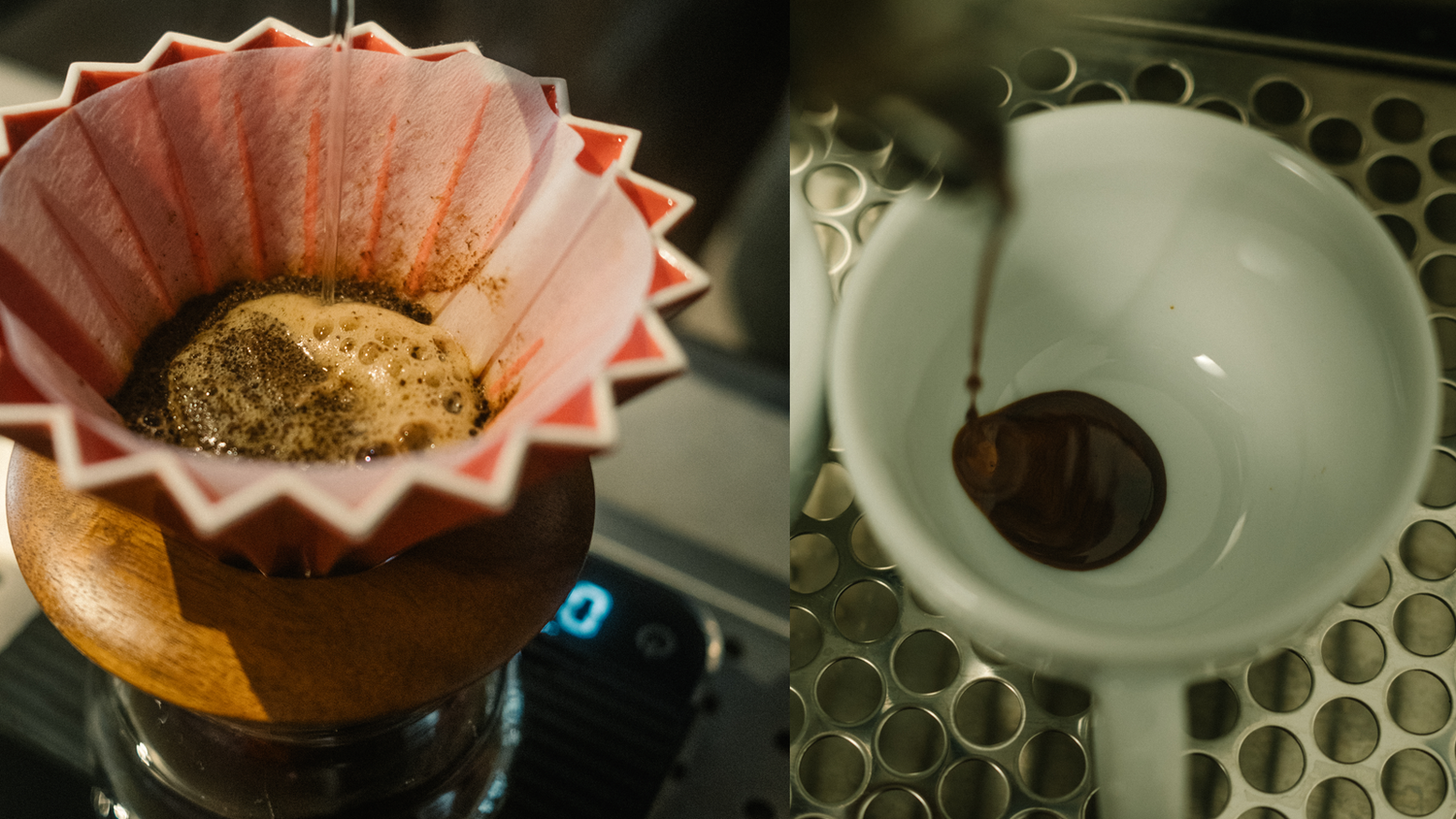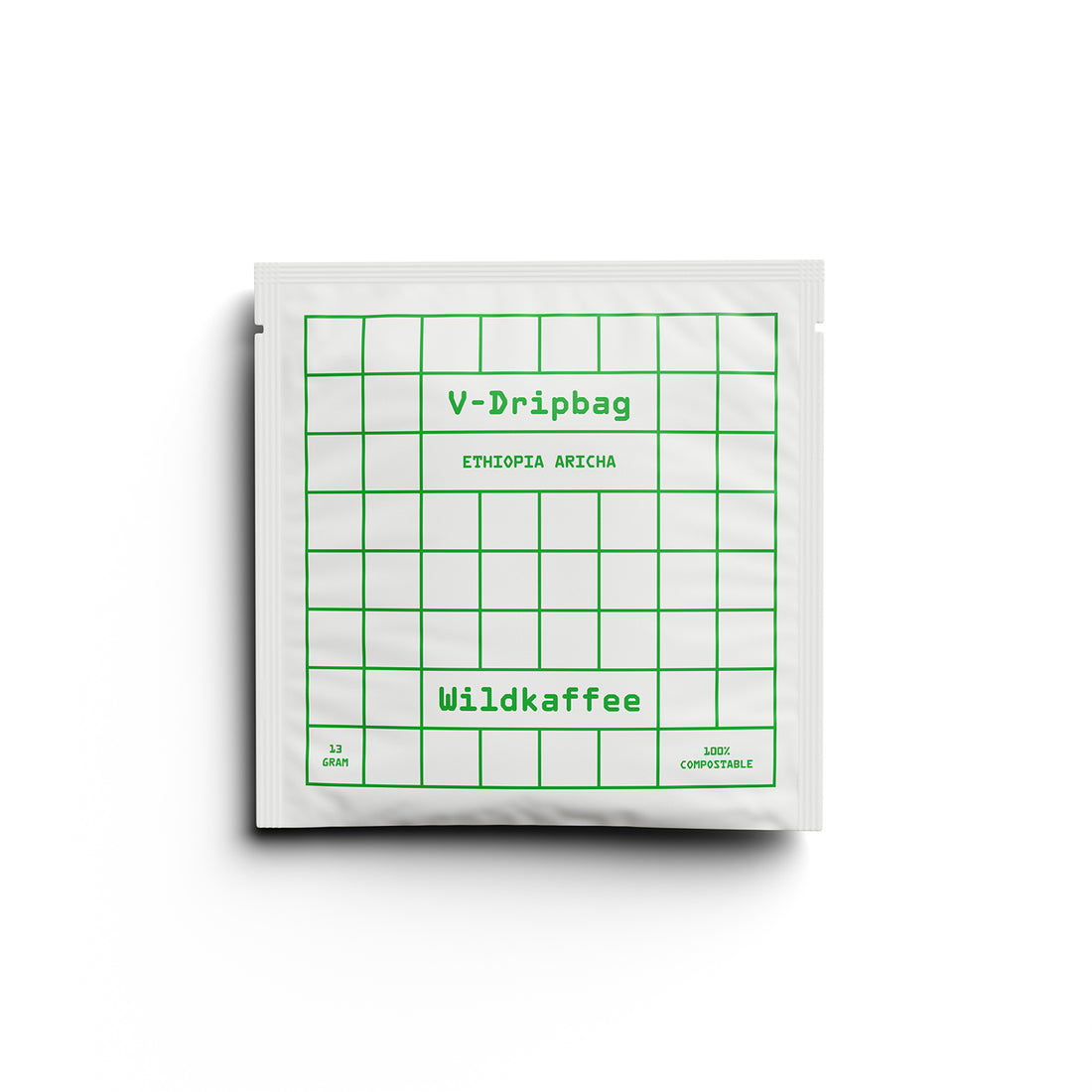Espresso vs. filter coffee – which has more punch?
Many coffee drinkers believe that espresso equals supercharged caffeine! After all, it tastes strong, is served in tiny amounts, and provides a quick wake-up kick. But is that really true? The answer is yes and no—and it depends on how you measure it.
Caffeine per milliliter – Espresso is the clear winner
Espresso is prepared with high pressure and a short extraction time, resulting in a high caffeine content for a small amount of liquid.
- A single shot of espresso (30–40 ml): about 39 to a maximum of 52 mg of caffeine
- 100 ml espresso (theoretical): over 120 mg caffeine
Filter coffee, on the other hand, is brewed with more water, which means the caffeine concentration is lower:
- 100 ml filter coffee: approx. 50 to 70 mg caffeine
- However: a portion of filter coffee usually contains 150 to 200 ml (i.e. a good 140 mg of caffeine)
👉 Conclusion: Sip for sip, espresso is much stronger.

Caffeine per cup – filter coffee strikes back
Here's the surprise: Because espresso is so small, you consume less caffeine per cup than with a large serving of filter coffee. Or rather, if you consume the standard sizes of both beverages. An espresso typically contains a small amount of liquid, around 30 to a maximum of 40 milliliters, and a cup of filter coffee contains between 125 and 200 ml, making it up to five times the size of an espresso. This means, in absolute terms, that you consume more caffeine with a cup of filter coffee (100 to 140 mg per serving) than with an espresso (39 to 52 mg caffeine).
➡️ This means: You need two, three (or maybe four) espressos to get the same amount of caffeine as with one cup of filter coffee.
How much caffeine is OK?
And at this point, let's talk about caffeine in general. How much can I consume per day? Currently, 400 mg of caffeine per day is considered perfectly safe for a normal adult. That's about, say, four cups of filter coffee or 10 espressos.
The lethal dose of caffeine is 5 to 10 grams, which is 10 to 20 times the dose. So there's some leeway. What I'm saying is, if you drink 5 cups of coffee a day, or even 6, you don't need to worry about harming yourself. However, you should also have days where you consume less caffeine.
Older and younger people, pregnant women , and people with heart problems should generally avoid consuming large amounts of caffeine. The recommended maximum intake is 200 mg of caffeine per day—or even less, if possible.
What does the caffeine content depend on?
Several factors influence how much caffeine ends up in your cup:
- Bean type: Robusta contains almost twice as much caffeine as Arabica. Arabica beans contain between 0.8% and 1.4% caffeine, while Robusta beans contain 1.7% to a full 4% caffeine. However, Robusta is never used on its own (at least in our country), but rather added to Arabica in espresso blends.
- Roast level: Light roasts have slightly more caffeine than very dark roasts. The longer the roast, the more caffeine is broken down/converted.
- Preparation method: Pressure, time, and water quantity determine the extraction. The longer or more intensive the extraction, the more caffeine ends up in your cup. That's why cold brew has so much caffeine.
- Amount of coffee powder: More grams = more caffeine. Sounds logical, right?

Espresso or filter coffee – which works faster?
Espresso is often perceived as a "wake-up" because it's more concentrated and consumed quickly . While filter coffee provides more caffeine overall, it's consumed more slowly. Therefore, the espresso kick often feels more immediate. But ultimately, caffeine – regardless of the source – works just as quickly in the body. You could also drink green tea or cocoa, which also contain caffeine. Caffeine begins to take effect about 15 to 30 minutes after consumption and reaches its peak after about 60 minutes. That's why it's often recommended to drink an espresso before a 20- to 30-minute power nap. This way, you'll be twice as energized afterward.
H3 Comparison in numbers
|
beverage |
Serving (ml) |
Caffeine per serving |
Caffeine/liter |
|
espresso |
30-40 ml |
39–52 mg |
approx. 1300 mg |
|
150-200 ml |
100-140 mg |
approx. 700 mg |
|
|
Cold Brew (25 GRAMS Brazil) |
200 ml |
244 mg |
1,222 mg |
Conclusion
So espresso has (based on equal amounts) more caffeine than filter coffee. In terms of serving sizes, you'll also consume more caffeine with a larger amount of filter coffee than with just one espresso. Caffeine works the same speed, whether it comes from espresso, filter coffee, or an energy drink: after about 30 minutes. You shouldn't consume more than 200 mg of caffeine per serving, which is roughly equivalent to 1.5 cups of filter coffee or five espressos. Furthermore, you shouldn't regularly consume more than 400 mg of caffeine throughout the day. So, it's up to you whether you drink a cup of filter coffee or a triple espresso for your caffeine hit.




